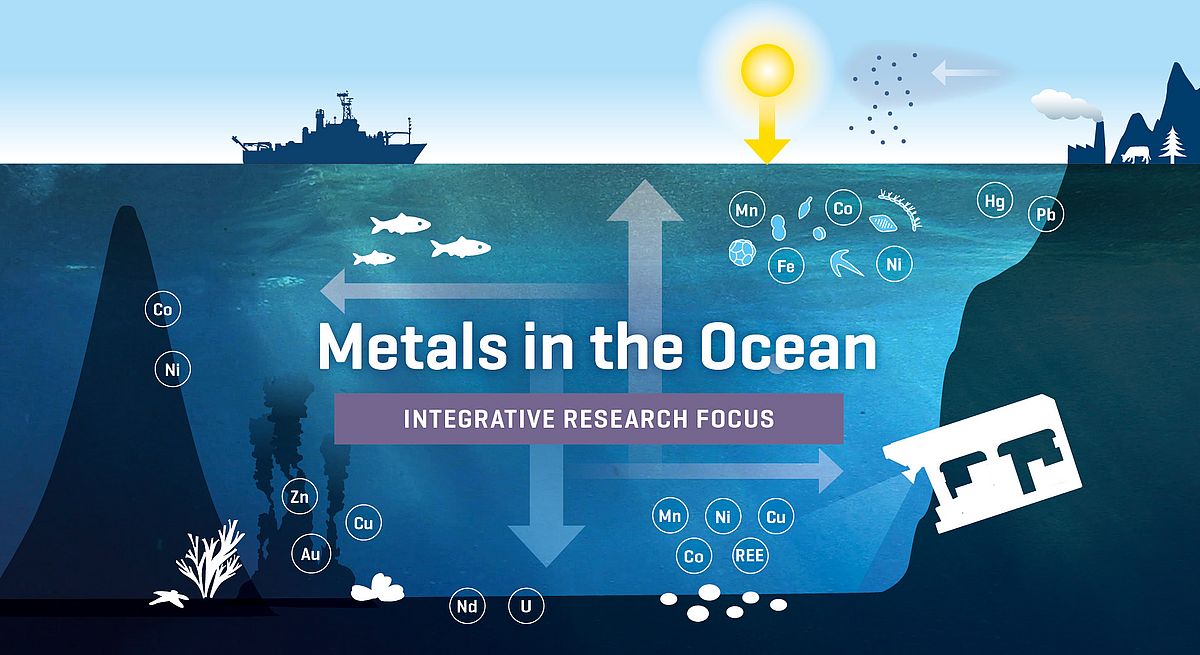Metals in seafloor deposits are not only valuable resources for high-tech and "green energy" products, but some are unfortunately also harmful to many marine organisms at certain concentrations. Therefore, as part of the research focus on “Metals in the Ocean”, the MMR group is addressing all aspects of trace metals associated with mineral deposits in the marine environment, including their concentration, physical and chemical speciation, and bioavailability and toxicity. Why? Because we need to understand not only where and why certain metals are chemically enriched or depleted at the deposit level, but also how these metals are bound in minerals and the pathways by which they enter the environment and organisms. And how? We are investigating the sources, sinks, and biogeochemical processes that determine the dynamics of metals during the formation of mineral deposits, and along their transport pathways from the mantle through hydrothermal fluids to the hydrosphere, and from the deep biosphere through the benthic and pelagic ecosystems to the photolytic zone, using state of the art analytical methods and tools. We are also investigating the ecosystem impacts of the release of potentially toxic metals that would result from the exploitation of marine mineral deposits and developing models to reduce the uncertainties associated with current data-poor, expert opinion-based risk assessments of deep-sea mining projects, thereby working closely along the science policy interface. The work is linked to world-leading collaborators at GEOMAR, related Helmholtz centers and existing strong national and international scientific cooperation with the Jacobs University (Germany), GESAMP, University of Otago (New Zealand), .



